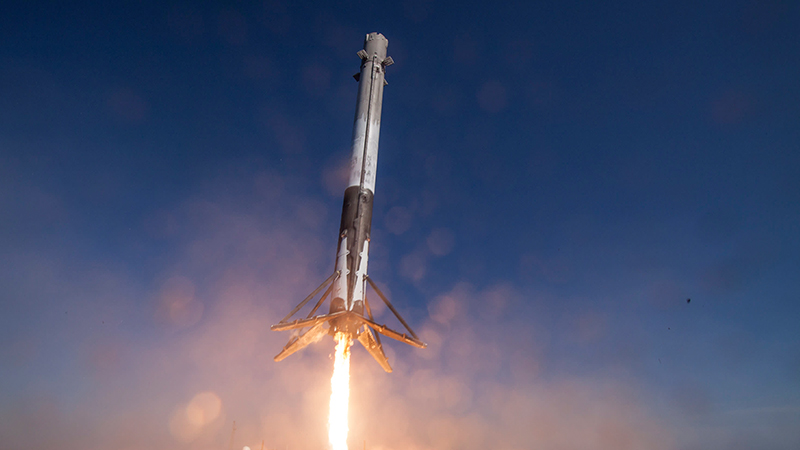

Image Courtesy: SpaceX
There has been considerable attention paid to reusable launch rockets in recent years, and for good reason. At their most basic level, reusable launch vehicles are those that can be landed and re-flown with new payloads, although there are currently only partially-reusable systems.
The potential of reusable launch vehicles to transform the economics of space travel should be fairly evident. Even so, let’s break down the benefits and drawbacks of this technology to understand more.
Various theoretical designs of reusable launch vehicles have been tested during the history of space flight, but they generally proved too expensive or impractical to implement. NASA planned a fully-reusable space plane for the 1969 moon landing, but it had to scale its designs back to reusable solid rocket boosters due to costs.
In the 21st century, the rise in industry privatisation led to several companies taking the lead in reusable launcher development. We’ve all heard of SpaceX and Blue Origin, which are arguably the biggest names in this sector. Similar to NASA, their focus is on fully-reusable systems, but only partially-reusable systems have so far been practical.
Unsurprisingly, partially-reusable systems have single-use sections, typically the orbital inserter. Most systems recover launch systems and shuttles, either through atmospheric re-entry or planned landing. As it stands, these are the most practical uses of reusable launchers, although SpaceX plans to test a fully-reusable launcher in 2023, and Relativity Space plans to test its reusable launcher in 2024.
The most obvious benefit of a reusable rocket is cost savings. Unsurprisingly, it’s much cheaper to refurbish and relaunch a rocket than it is to build a new one – it can be up to 65% cheaper, with a 30x lower cost overrun. Reusable rockets also use less fuel than their expendable counterparts, making them comparatively better for the environment.
In turn, these factors reduce the launch cost of rockets, opening up the market to a greater range of companies. For example, a satellite startup would have much better luck funding its launch on a reusable rocket, particularly as launchers can offer partitioned payload space.
Finally, there are the benefits that reusable rockets have created in launch and landing technology. These rockets need highly advanced navigation systems; SpaceX’s rockets can land on ships with great accuracy, which has been proven numerous times. This could have a knock-on effect, allowing us to stop off on other planets to refuel before continuing further space exploration.
Of course, no system is without its downsides. The main disadvantage of reusable rockets is their reduced payload. By extension, they must be built to survive the difficulties of launch and re-entry, meaning there are more stabilisation fins and extra equipment. In turn, this means the rockets are heavier.
Reusable rockets must be refurbished and tested before each new launch. These processes obviously take time and resources to ensure the launchers are at an appropriate standard. However, it’s obviously far less time and resources than building and launching expendable rockets.
The bottom line is that now we have a firmer grasp on the concept of reusable launchers, their potential impact is limitless. Granted, there are some issues to resolve in terms of extra weight and reduced payload capacity, but the space industry is well on its way to perhaps its biggest revolution in terms of cost reduction and accessibility.
